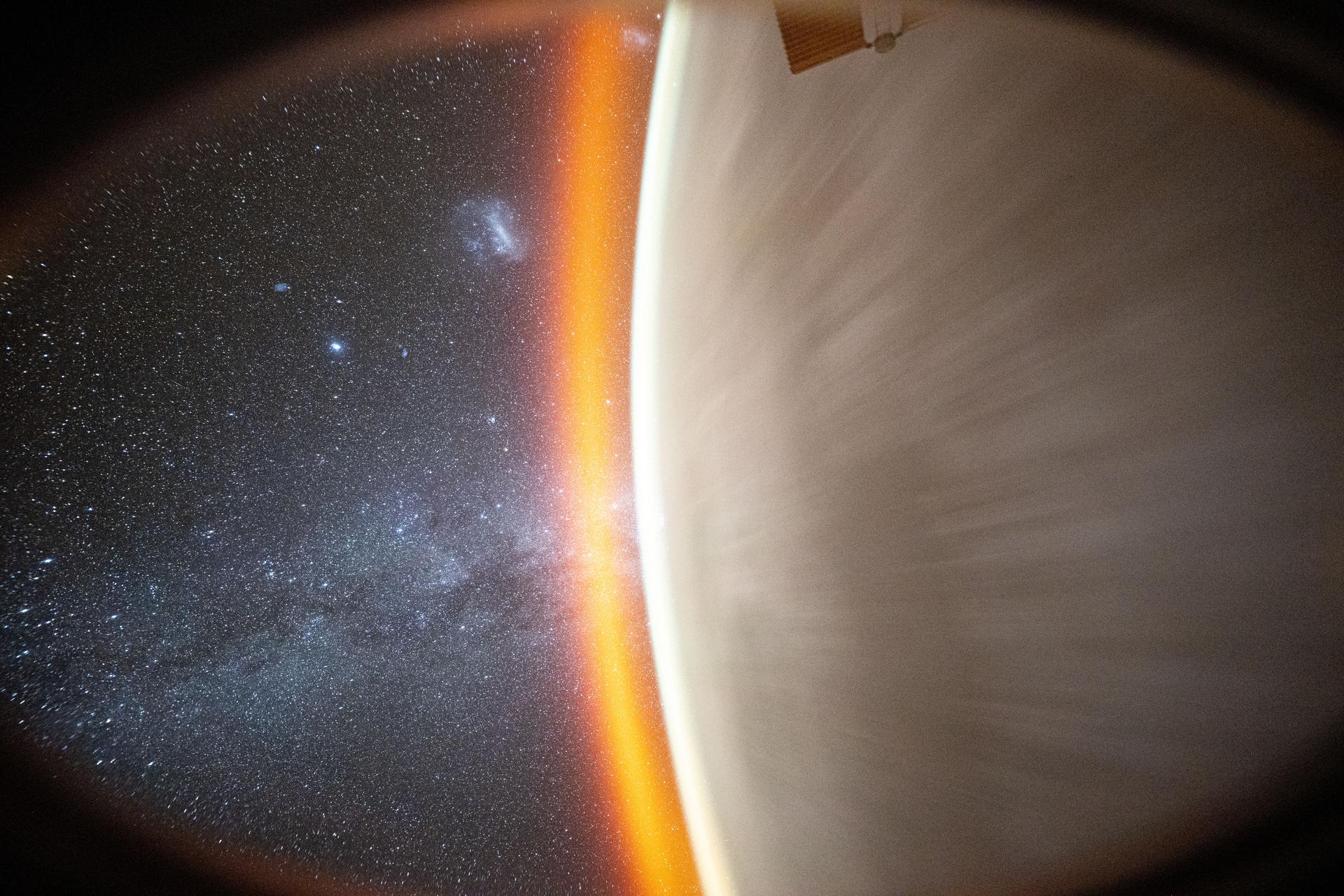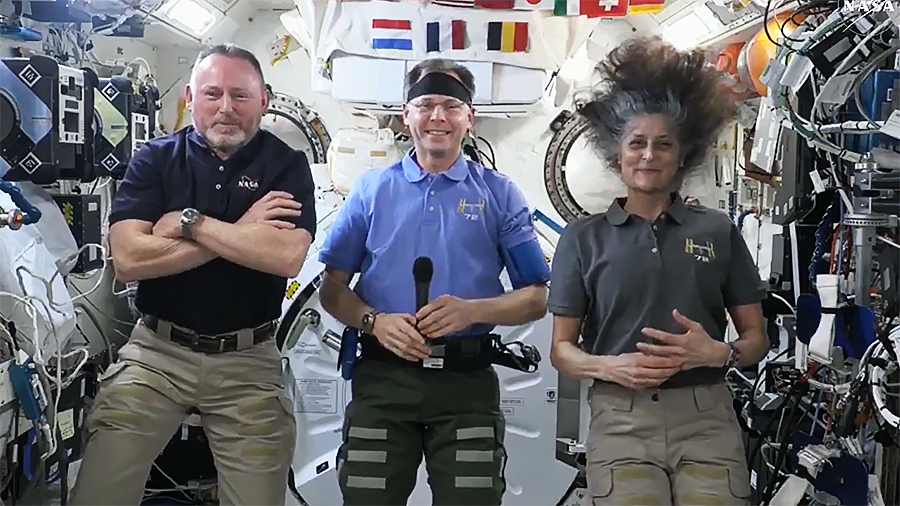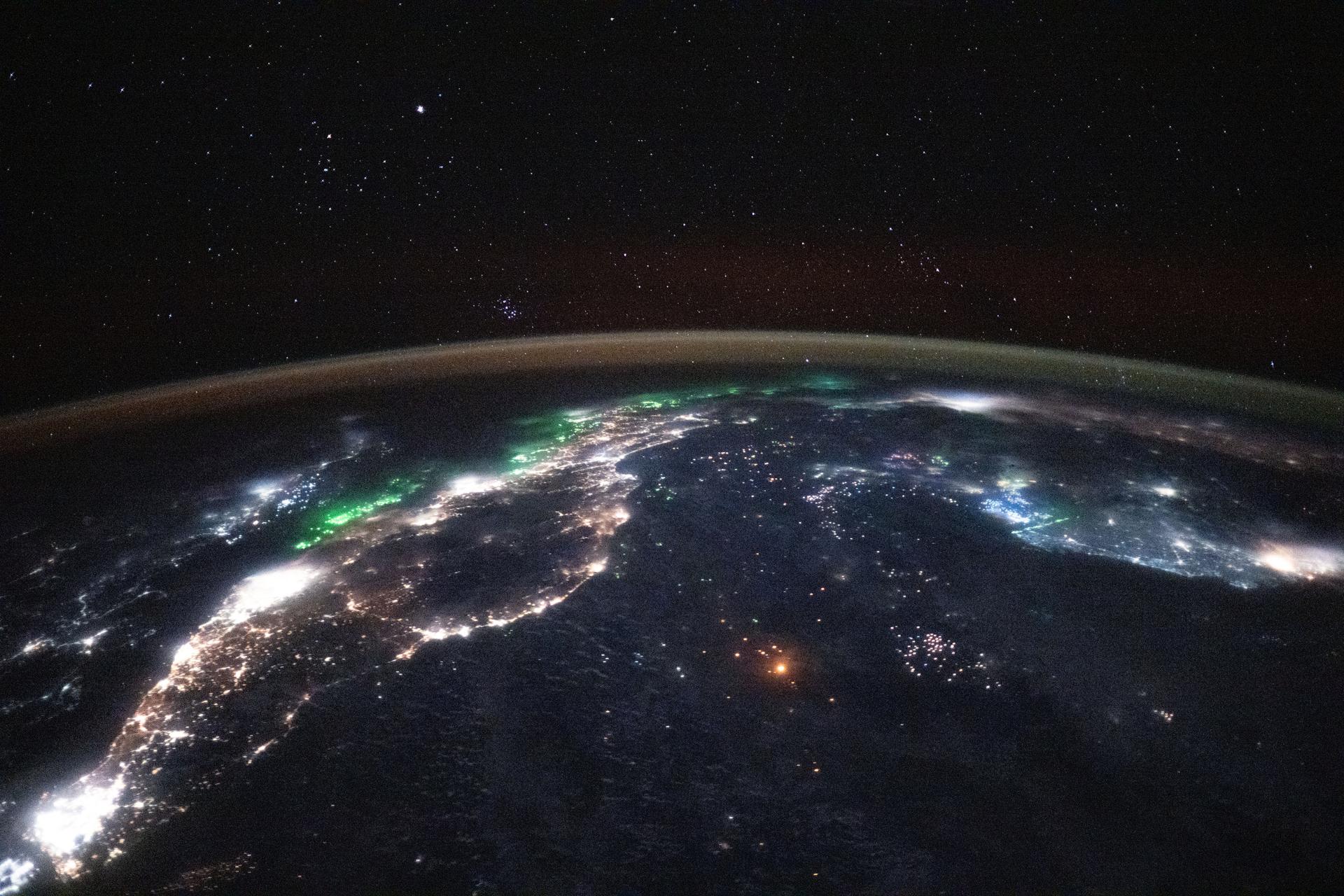Crew Works Vein Scans and Muscle Stimulation Prior to Upcoming Departure
Vein scans and muscle stimulation were the primary research activities aboard the International Space Station on Wednesday to learn how to keep crews healthy in space. The Expedition 72 crewmates also continued preparing for an upcoming crew departure while unpacking a cargo craft.
NASA Flight Engineers Nick Hague and Don Pettit partnered throughout the day on space biology experiments providing doctors insights on how their bodies are adapting to weightlessness. Doctors use the data to continuously improve crew training and develop countermeasures to help astronauts maintain their strength and fitness during long-duration space missions.
The duo first performed vein scans in the Columbus laboratory module using the Ultrasound 2 device. Hague operated the biomedical hardware with remote guidance from doctors on the ground who were peering at Pettit’s neck, shoulder, and leg veins. Next, Pettit assisted Hague as a control unit sent signals to electrodes that stimulated Hague’s leg muscles including the quadriceps and triceps. Electrical muscle stimulation may improve muscle function, shorten workout sessions, and lead to lighter exercise equipment offsetting space-caused muscle atrophy.
Commander Suni Williams and Flight Engineer Butch Wilmore, both NASA astronauts, focused on housekeeping duties cleaning ventilation systems and checking electrical hardware inside the Harmony module’s crew quarters. Williams also set up temporary crew quarters in the Columbus module to house the SpaceX Crew-10 members targeted to arrive next week. Wilmore loaded new software on a science laptop computer in the Kibo laboratory module.
At the end of the day, Hague, Williams, and Wilmore joined Roscosmos Flight Engineer Aleksandr Gorbunov inside the SpaceX Dragon crew spacecraft and continued training and coordinated their roles before their forthcoming return to Earth. After the Crew-10 mission arrives, the homebound quartet will board Dragon a few days later, undock from the Harmony module’s space-facing port, and splash down off the coast of Florida ending the SpaceX Crew-9 mission.
Earlier, Gorbunov set up imaging hardware to observe Earth’s nighttime atmospheric glow in near-ultraviolet wavelengths and began packing for his ride back to Earth. His fellow cosmonauts, Flight Engineers Alexey Ovchinin and Ivan Vagner were back inside the Progress 91 cargo craft unloading supplies to replenish the Expedition 72 crew.
Learn more about station activities by following the space station blog, @space_station and @ISS_Research on X, as well as the ISS Facebook and ISS Instagram accounts.
Get the latest from NASA delivered every week. Subscribe here: https://www.nasa.gov/subscribe
Powered by WPeMatico
Mark A. Garcia








